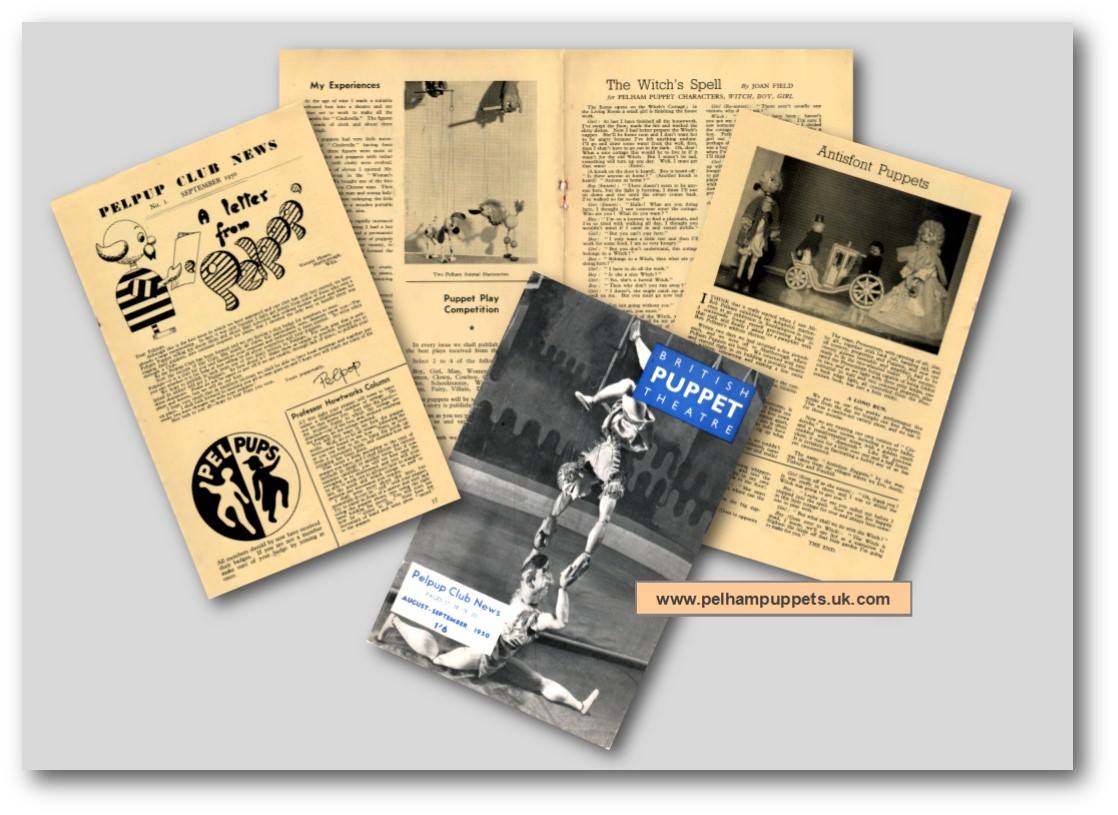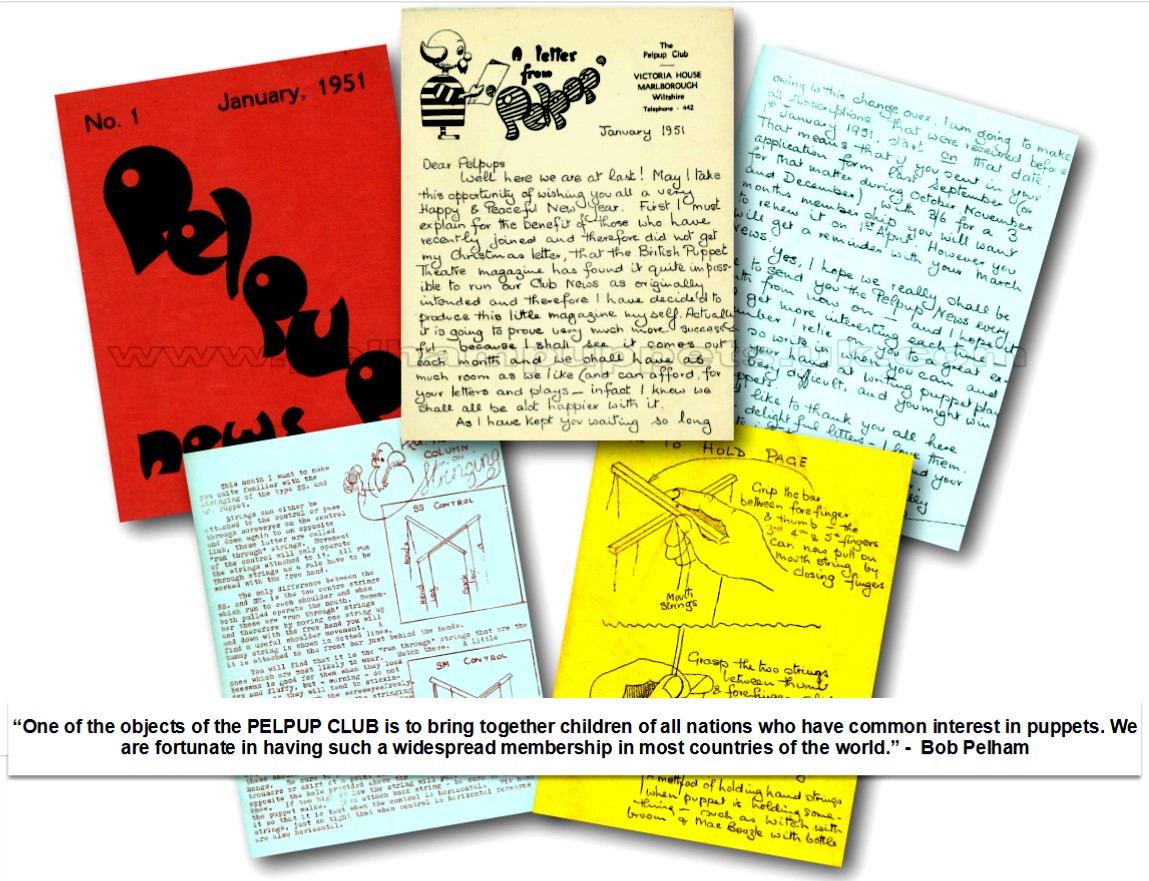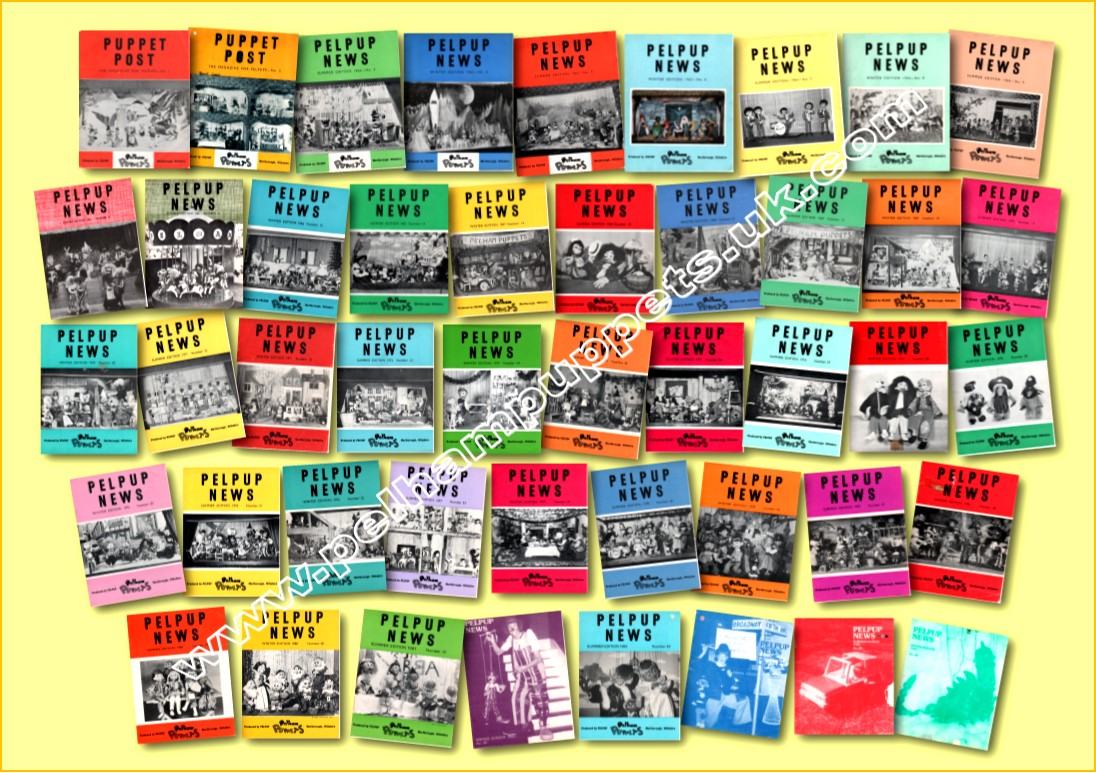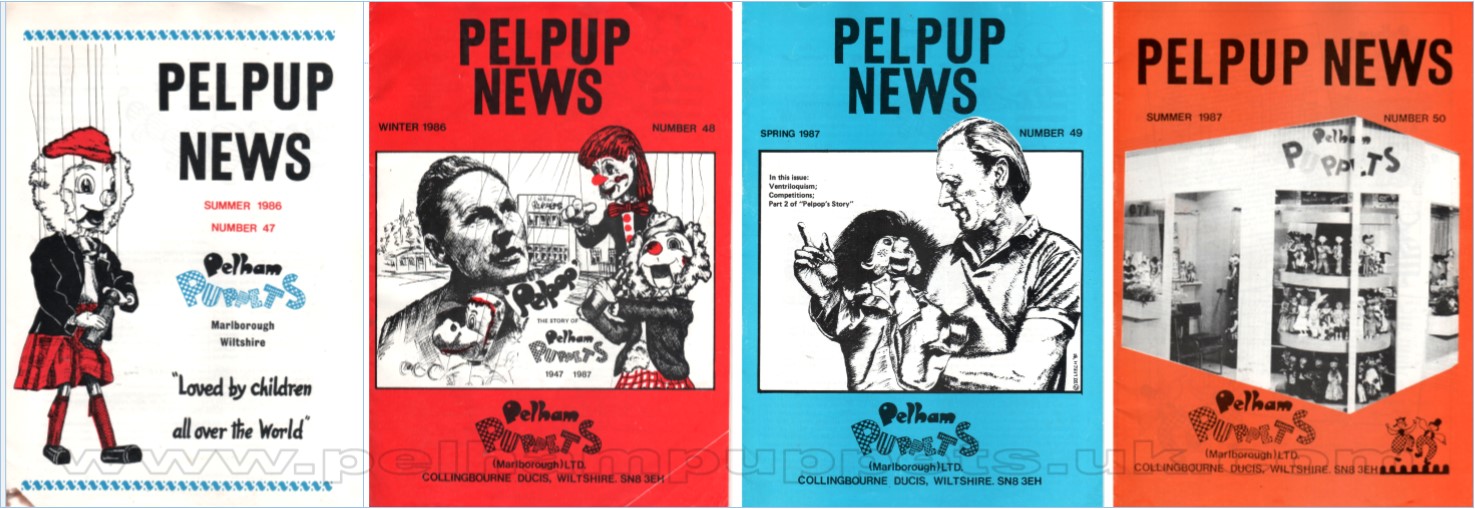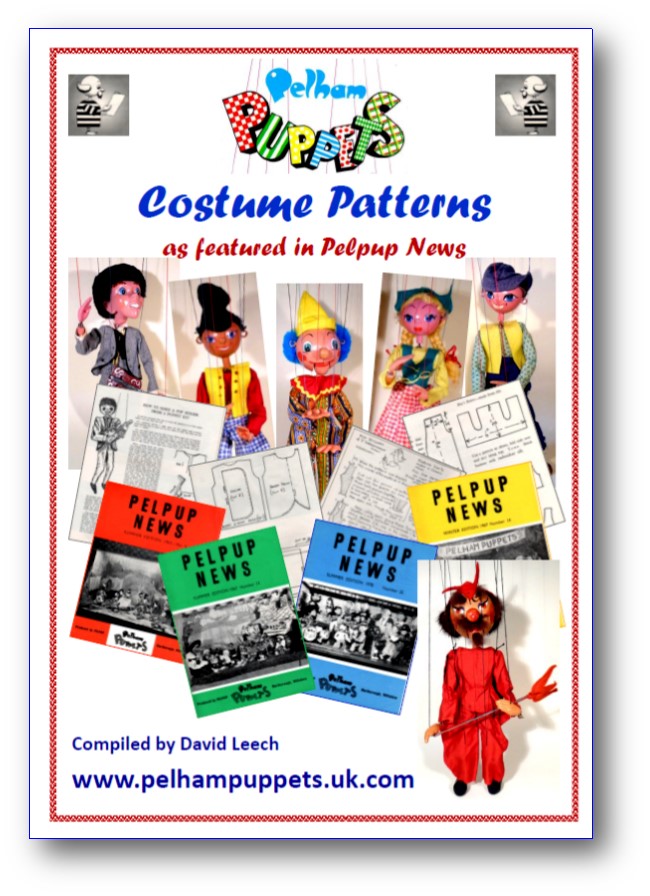Pelpop introduces the pop group, “Pelpoppets” in Pelpup News Summer 1964
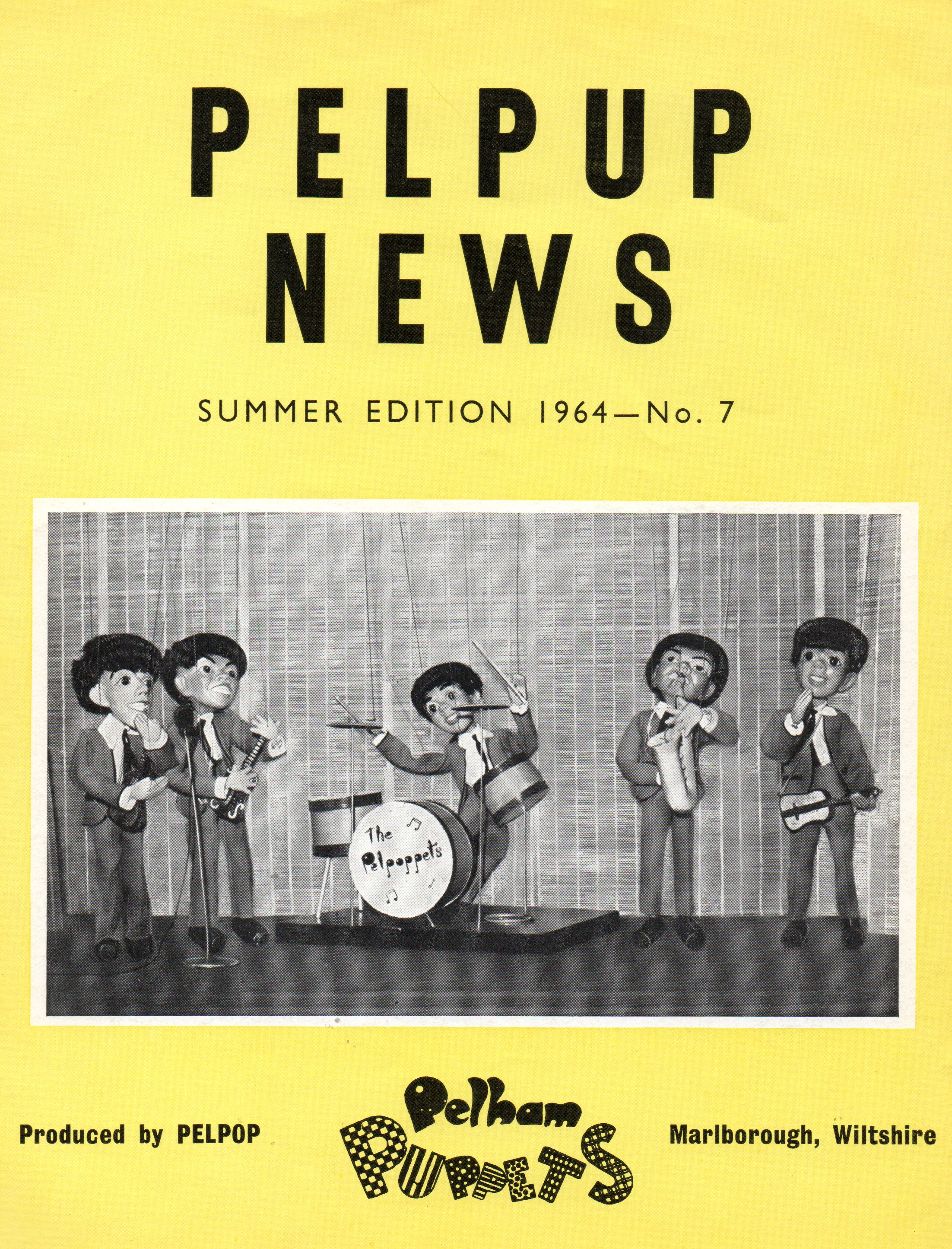 Initially, only the drummer and guitarists were made but very soon several of the women, (I was told from the sewing room mainly,) said to Mr Pelham, “Why don’t you have a sax player?” It wasn’t long before he appeared in the line-up too.
Initially, only the drummer and guitarists were made but very soon several of the women, (I was told from the sewing room mainly,) said to Mr Pelham, “Why don’t you have a sax player?” It wasn’t long before he appeared in the line-up too.
The Beatles or the Dave Clark 5?
When Pelpop appeared with his pop group on BBC TV’s Blue Peter programme, they played to the Dave Clark 5 song, “Glad All Over.”
There were two very specific reasons why this song was used on Blue Peter on June 1st 1964.
Sid Long and Eileen Sims-neighbour, two of the employees who went with Bob to operate the puppets on the programme, (David Macey was the 3rd person, but he’d left the company by the time I started working there,) both confirmed that Bob loved using the drummer and if you saw him operate one, you’d see why.
Secondly, the song had recently been No 1 in the Charts so was a popular choice anyway. I would imagine the women in the factory would have urged him to choose a song they liked as well.
Even though the puppets were dressed in a similar style of suits worn by the Beatles in the early days and some people seem to think the heads look like Dave Clark 5, there was never any intention to make the puppets look like either group.
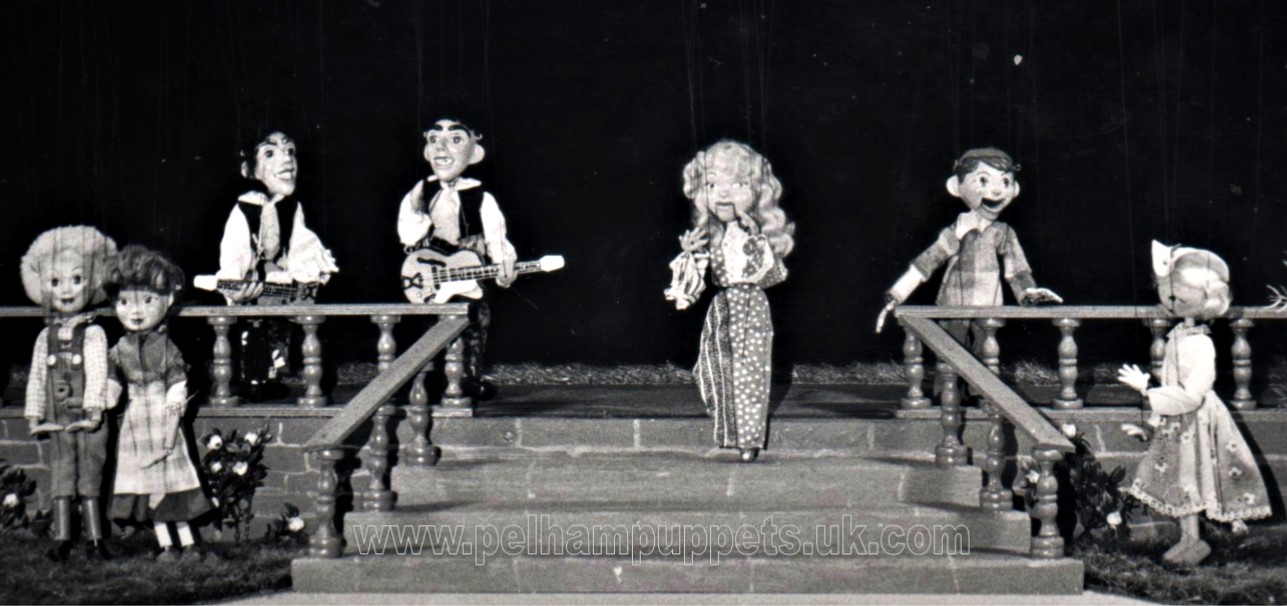
The story of the pop singer heads goes like this….
A head would begin with a plasticine model. Percy Mortimer would often make these for him. (He didn’t do this full time, Percy had another business.) Bob had asked him to come up with a set of heads for a pop group.
A few weeks later, he still didn’t have them. So Bob went round to Percy’s place and asked where they were and when would he get them? Percy pulled open a large drawer, took out a lump of plasticine and while they were chatting, produced 4 or 5 heads within a matter of minutes! He handed them to Bob and said, “there you are!”
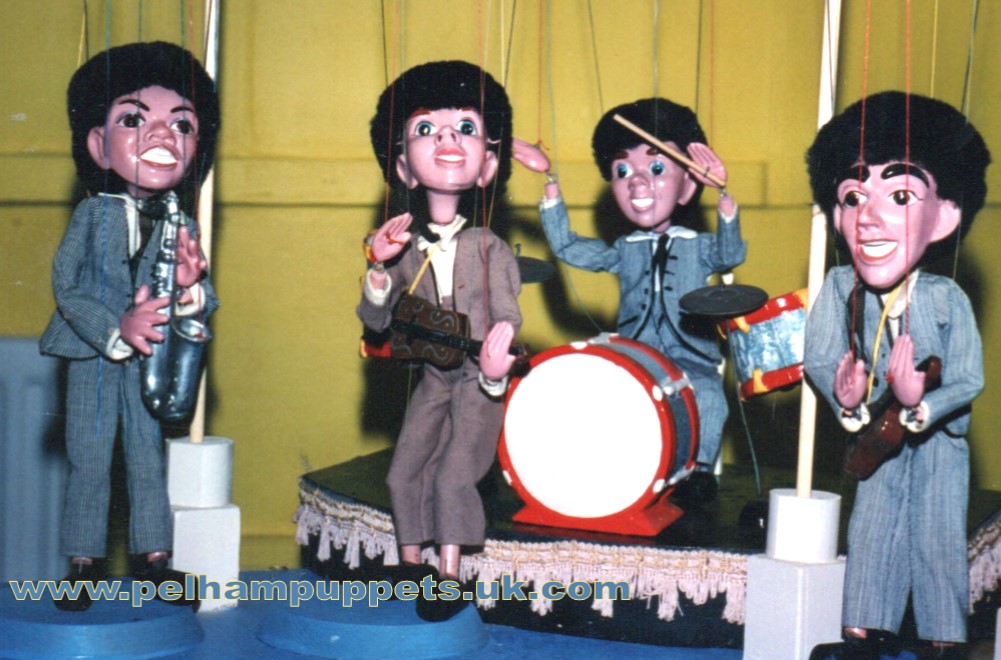
Any suggestion that these puppets “were meant to be” or “based on” the Beatles or the Dave Clark 5 is pure conjecture. The outfits for the Pelpoppets changed in time, to reflect the changes in fashion through the late 1960s into the 1970s as can be seen in the photo above, from one of the Pelham Puppet factory shows that I put on in 1980. As Bob clearly stated in Pelpup News:
“They are not meant to look like any one particular group, they are just present-day types that can be grouped together as you please.”


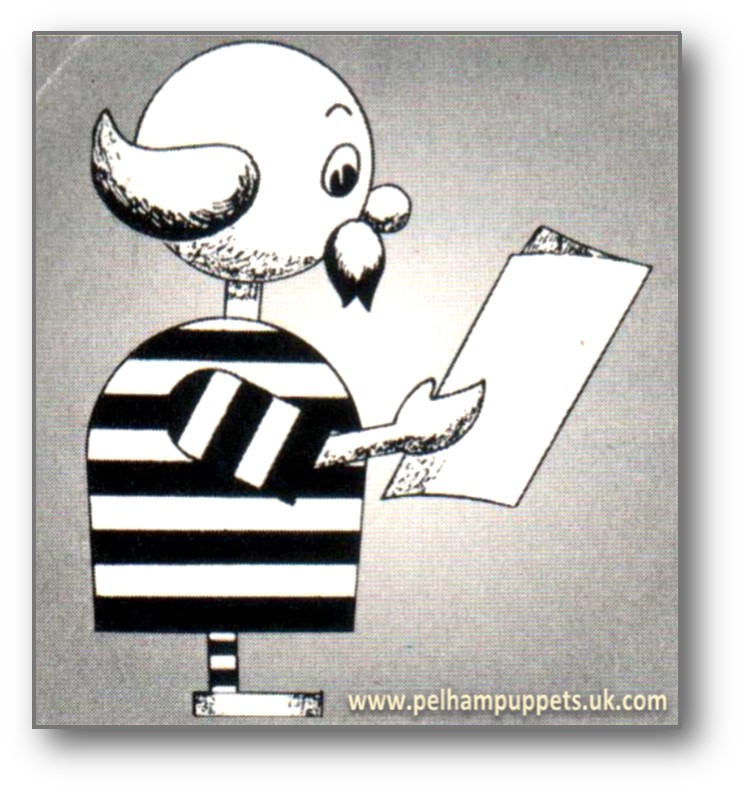 His introduction to the Club, appeared in the British Puppet Theatre magazine in September 1950. He wrote: “It was only because I daily get letters from some of those who own a Pelham Puppet, telling me about them and about their activities and seeking further advice and ideas for staging their puppets, also the constant request for plays, that I decided the only way to handle them was through a Club.
His introduction to the Club, appeared in the British Puppet Theatre magazine in September 1950. He wrote: “It was only because I daily get letters from some of those who own a Pelham Puppet, telling me about them and about their activities and seeking further advice and ideas for staging their puppets, also the constant request for plays, that I decided the only way to handle them was through a Club. 